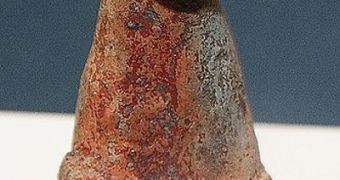A long time before Athens and Rome became two of the most renowned cities in the world, there existed a civilization on the Danube River, in Eastern Europe, that exceeded all its contemporaries in terms of arts, sciences, and their ability to work copper, the newest materials of the time. This civilization existed even before the Mesopotamians developed their first cities, or the first Egyptian temples were built along the Nile River. Now, this culture is saved from obscurity by a new exhibition in New York City, The New York Times reports.
This people started occupying the region more than 7,000 years ago, around the year 5,000 BC. For one and a half millennia, they endured at the borders of modern-day Romania and Bulgaria, where they thrived and flourished. Their towns, archaeologists say, grew as large as to accommodate more than 2,000 homes, which was a significant development for such an early civilization. Their culture evolved to a point where the dead were treated like royalty. Graveyards belonging to Old Europe were laden with headdresses and necklaces, all crafted in copper. One of the tombs featured the largest collection of gold artifacts ever discovered.
But the hallmarks of their civilization were, undoubtedly, the terracotta “goddesses,” anthropomorphic statues meant to express fertility. For many years, researchers thought that the images were just statements of the important role the women played in those societies, but new investigations have uncovered the fact that the culture was in fact highly advanced for its time, as far as visual language went. According to experts currently investigating archaeological sites in the region, it would appear that the Old Europe culture was so developed that it could merit the term “civilization.”
For the first time ever, artifacts belonging to this amazing people, collected from museums in Romania, Bulgaria and Moldova, are on display at the Institute for the Study of the Ancient World at the New York University. The display, called “The Lost World of Old Europe: the Danube Valley, 5000-3500 B.C.,” opened there last month. “Old Europe was among the most sophisticated and technologically advanced places in the world [at the time, and was contributing to the creation of] many of the political, technological and ideological signs of civilization,” the exhibition's curator, David W. Anthony, explains. He is a Hartwick College professor of anthropology.
Over the past few years, Romania has become a huge attraction for archaeologists, who come here to study sites dating back thousands of years, far before the advent of civilizations such as the Greeks and the Romans. In addition to Old Europe, the Cucuteni culture also became a subject of interest for many historians. In addition, paleontologists and archaeologists studying the Pestera cu Oase (the Cave with Bones) formation in the Carpathian mountains discovered here the oldest ancestor of humans that came to Europe, more than 35,000 years ago.

 14 DAY TRIAL //
14 DAY TRIAL //